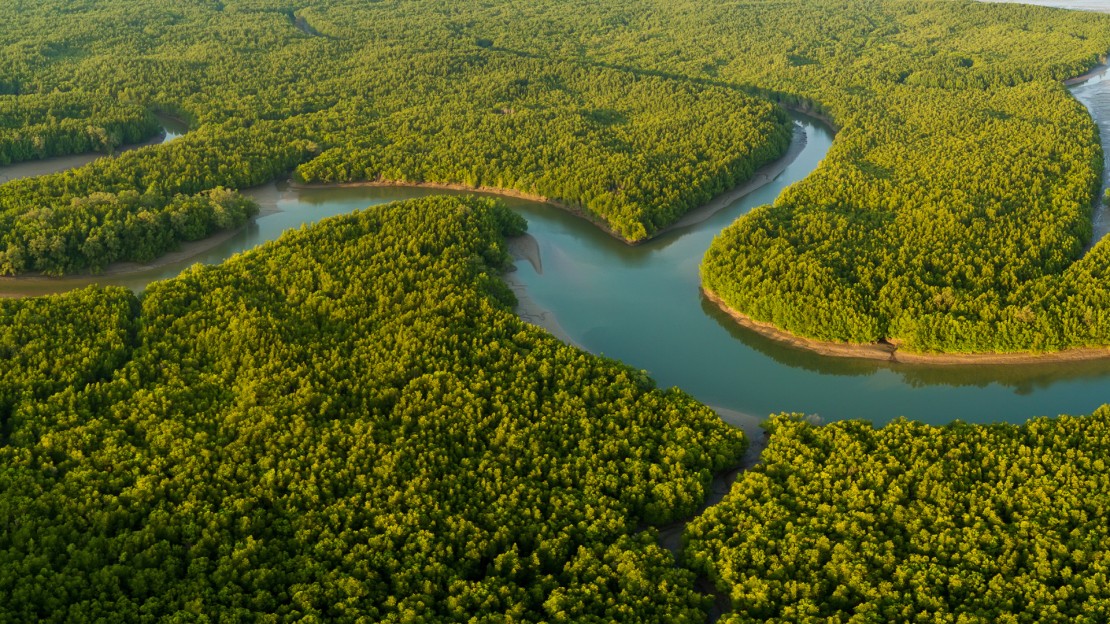For centuries, the importance of nature in sustaining life on earth has been overlooked in favor of industrialization and economic growth. We have now reached a critical juncture globally as the consequences of nature loss—whether declining biodiversity or increased vulnerability to climate shocks—are too stark to ignore.
The effects are multifaceted and severe. The UN Environment has noted that declines in nature and biodiversity at current trajectories will undermine progress toward 35 out of 44 of the targets of SDGs related to poverty, hunger, health, water cities, climate, oceans and land.
Discourse has matured from a binary view that often frames a choice between nature and human development to a new perspective that nature can be a vehicle for development. Following World Nature Conservation Day, we chart the recent progress in the nature and finance landscape, reflecting on how the world can go further to invest in natural infrastructure.
The Asian Infrastructure Investment Bank (AIIB) has long championed the importance of nature in its work, culminating in the release of our flagship Nature as Infrastructure report in 2023. The report argues that to achieve a nature-positive future, we must view nature as a key component of infrastructure development. Nature as Infrastructure recognizes that investing in natural infrastructure does not just solve specific challenges—such as climate adaptation or disaster risk reduction—but also restores and enhances the underlying health and function of ecosystems.
In establishing this concept, we found that innovative financial solutions were missing. While investor appetite exists, a dearth of financial instruments and markets remains, hindering the delivery of change at scale.
In particular, we identified a need to encourage financial solutions such as performance-linked bonds, policy-based lending, debt-for-nature swaps and nature credit markets. These products can help fund projects ranging from coral reef restoration to mangrove reforestation, which offer significant social, environmental and economic benefits.
In integrating nature and finance, it is necessary to implement new systems that help determine the value of nature. This thinking inspired the creation of a new natural capital valuation model, developed by Arcadis and the European Bank for Reconstruction and Development (EBRD).
This new framework enables organizations to identify and prioritize nature-positive investment opportunities and assess and improve a project’s performance. AIIB has begun applying this new model on projects such as the Inner Mongolia Ulanhot Green and Climate Resilient Urban Development Project, which supports efforts to improve the resilience of urban infrastructure that includes roads, water supply and drainage systems by investing in ecologically restoring wetlands.
With frameworks such as the Natural Capital Valuation model, multilateral development banks (MDBs) can proceed with greater confidence that investments in nature as infrastructure will have a direct, measurable impact.
The world is moving forward. At AIIB’s 10th Annual Meeting, the Bank announced a new Nature Finance Accelerator Program aimed at driving investments that promote nature conservation, nature-based solutions and nature infrastructure. To boost this initiative, AIIB has partnered with Tencent and the French development agency AFD. These partners offer solutions, including technical assistance and nature-based carbon credits, and leverage digital tools to track the benefits of nature and biodiversity.
Additionally, in 2024, AIIB launched its Climate-Focused Policy-Based Financing (CPBF) instrument, which supports policy reforms that strengthen climate resilience and promote low-carbon development, with nature as infrastructure playing a key enabling role.
The European Commission also published a Roadmap towards Nature Credits, which aims to channel private finance into biodiversity and ecosystem restoration.
There has also been progress at the country level. At the International Conference on Financing for Development last month, the Government of Spain and the World Bank launched a new Global Hub for Debt Swaps for Development, which is aimed at providing technical and financial assistance to indebted countries to access debt-for-nature swaps.
By coming together in partnership, governments, the private sector and MDBs can drive further progress through their convening power, risk-sharing capabilities, and complementary expertise.
AIIB aims to maintain this momentum by focusing on key events in the development calendar that can spotlight this issue. This year, the UN’s COP30 conference will be of particular importance. Hosted in Belém, the gateway to the Amazon Rainforest, nature and biodiversity will inevitably be a prominent talking point at the conference. Brazil is home to 15-20% of the world’s animal and plant species, including the largest stretch of mangroves in the world. Huge swathes of its population depend on its diverse ecosystem for their livelihood, and any decline in biodiversity and nature would have severe economic and social consequences.
We look forward to promoting nature as infrastructure at COP30, reiterating that investment in solutions and the need to view investment in nature as a means of development can navigate us through the most pressing global issues. Among other things, AIIB will, together with partner MDBs and the Paulson Institute, launch a report on how to mobilize the private sector for nature as infrastructure. Without involving private investors, we will never be able to reverse nature loss and restore nature’s capacity to support human activity.


